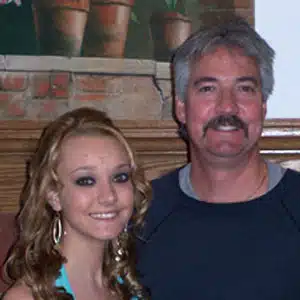If you are reading this, it is probably because someone you love suffers from seizures. I am writing this because on June 22, 2007, I lost my beautiful nineteen-year-old daughter Generose as the result of a seizure. I just pray I can reach out and help other families so they do not go through the devastation my family lives through everyday. If this helps raise awareness of epilepsy, or raises contributions to further epilepsy research, then my pain is eased a little. It will never go away because the memory of Gen will always be with me.
Gen had been having grand mal seizures since she was about sixteen, although we now suspect she was having seizures before then. She would have a “blond moment,” where she would pause for a brief second while talking. This was probably the start of her seizures but we didn’t know and thought it was more of a way she gathered attention or played the role of a “blond.” We joked about it.
Her friends revealed to us that every once in a while they noticed Gen’s eyes roll up and lock for a few seconds. In high school, she “blacked out.” The school notified us, and we took her to a neurologist. He told us she was having seizures, and started her on medication right away. Her first big seizure happened at a hockey game and that was the first of about six trips by ambulance to the emergency room over the next two years.
As she experienced more and more seizures, the medications were increased. Getting a teenager to understand the importance of taking medication on a regular schedule seemed impossible. Gen had seizures at her high school, at a restaurant, at her dorm room in college, at home a few times. These are the ones we know about; there’s no telling if she had them during the night in bed or other places. We suspect she had one in the bathroom at work, after the prom, and once in a car while waiting for her brother.
It was not until after Gen’s death that we realized so many things can spark a seizure—change in temperature, stress, infections, menstrual cycles, hormones, lack of sleep, bright lights… the list goes on and on. You can’t predict seizures. So do you live in a bubble? Think about it; most normal activities can turn disastrous when a seizure happens. Gen suffered a seizure and drowned while taking a relaxing bath in the garden tub.
Gen was burning the candle at both ends—going to college, working, and living life to the fullest with her enormous group of friends. Gen was definitely the instigator of social activities, and played the role of counselor for the lovelorn. The devastation felt by her family has been equally felt by her friends, who in reality were also her family. We have planted trees at her high school, purchased bracelets and lanyards in her memory, and started web sites on Facebook.com in her memory. In death, Gen continues to give; from donated tissue for research, to corneas to give sight to two individuals—even clothes for the less fortunate.
Writing this is not easy. But when I read the facts that the second most common cause of disability or death in children fourteen and younger is seizures, my heart goes out to all that may be faced with the physical, emotional, psychological, and spiritual drain from losing a child. I had to tell Gen’s story; that’s how she would have done it.





